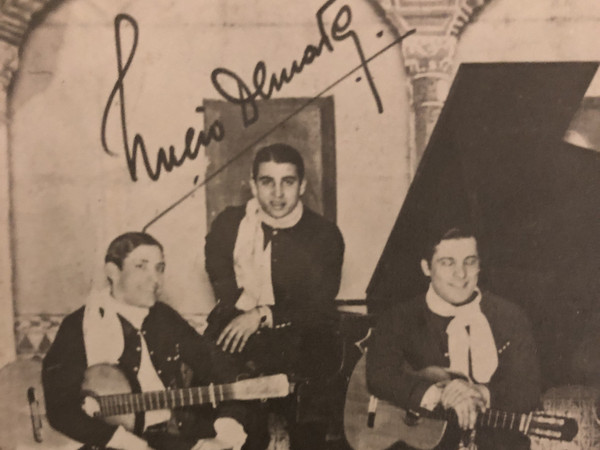|
The little Jazzer
The tango district of Abasto was home to the Demare family, which came from Italy. Early on, the father, himself a professional violinist, taught his son. Soon only the legendary piano teacher Vicente Scaramuzza could satisfy the musical hunger of the little boy, who often enough forgot to eat while playing the piano. Scaramuzza also initiated Osvaldo Pugliese, Horacio Salgán and Orlando Goñi into the secrets of the black and white keys. So it is not surprising that Lucio, at the tender age of eight, accompanied silent movies in the neighboring cinema from afternoon to midnight, for 40 pesos a month.
For a while, he even played as a ship's musician on a steamer that shuttled between Montevideo and Buenos Aires. Laws against child labor did not count in the young Argentina or were not observed.
Tangos, the music of the street or adults, were not yet part of the repertoire, which consisted of opera fragments and classical songs, since the father was a great fan of Italian music.
But when preliminary forms of jazz from the north of the United States found their way to the Río de la Plata, they also cast a spell over the young pianist. At age 13 pianist he gave swing to a Dixieland orchestra. His ambition, tireless practice and study paid off. Adolfo Carabelli, one of the key figures of Argentine jazz as well as the tango of the 1920s, discovered the young musician and placed him at the piano of his first-class jazz combo. Now the seventeen-year-old, who should have been wearing shorts, was strumming swing and boogie night after night in the prestigious Cabaret Ta-Ba-Ris for the city's haute-volée. Juan D'Arienzo, who made his way as a jazz violinist in the mid-twenties, was also part of the band.
Restless years
Most cabarets had two stages, one for jazz, one for tango. And at Ta-Ba-Ris, on the other side, night after night, Demare could listen to the Orquesta Típica of Francisco Canaro. And Demare was fascinated by the new music.
Bandoneon player Minotto Di Cicco was Canaro's most important musician. It was him who, in the very morning at 3 am after the performances successfully initiated the young jazzman into the tricks and secrets of tango playing. And he did so well, that Canaro took the young musician along with his violin-playing father to Paris, the place of longing for all South Americans. Canaros brothers Juan and Rafael Canaro kept the European branch of the Canaro empire going there.
The time in Paris was cool, but also tough. The 21-year-old often played from 5 p.m. to 4 a.m., but was able to buy his own car after just a few months- it was 1927! - The porteñes were hip and earned tons of money.
A highlight of these more than exciting years was a performance with superstar Carlos Gardel at the prestigious Cabaret Ambassador, as Gardel presented Lucio's first successful composition Dandy , and young Demare played the piano.
|
|

